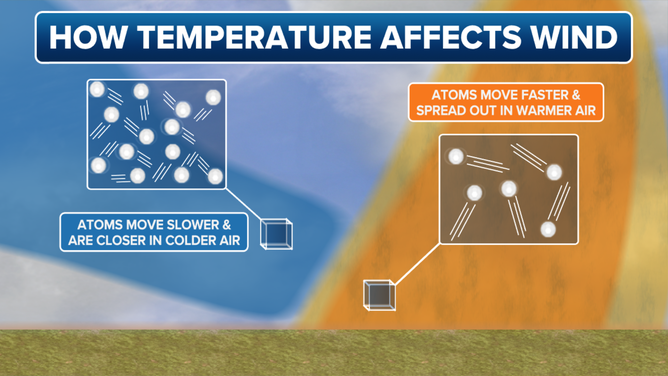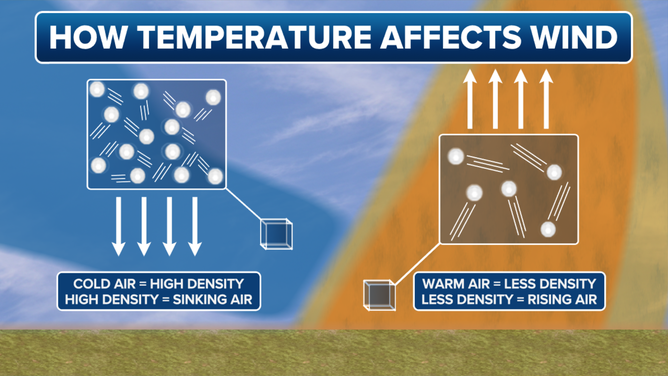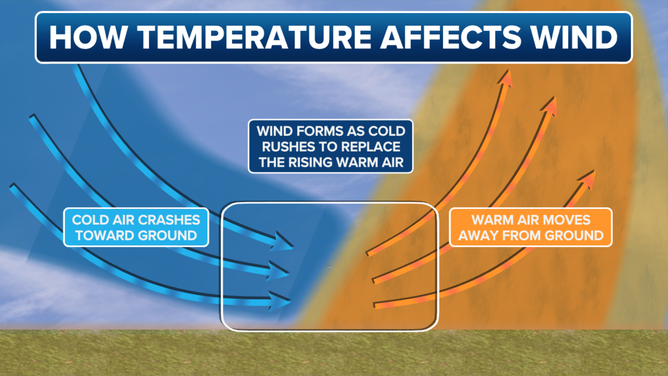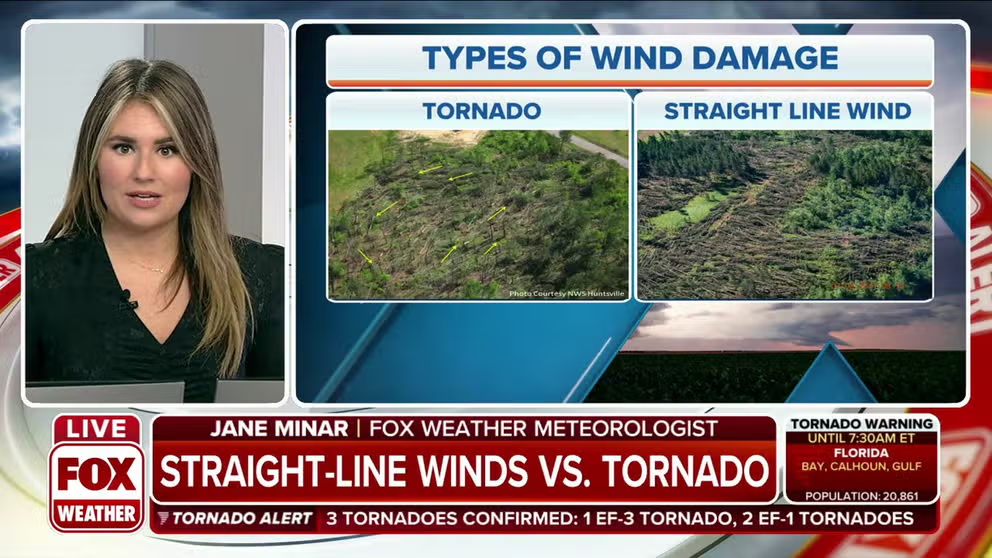What makes wind?
Wind can range from a light breeze to damaging gusts that knock out power, but the strength of those winds is rooted in differences in how Earth is heated by the Sun.
Straight-line wind damage vs. tornado: What's the difference?
FOX Weather meteorologist Jane Minar explains the difference between the types of wind damage: straight-line winds and a tornado.
Wind, simply put, is the movement of air from one place to another, but what causes the air to move in the first place is temperature.
According to NOAA, differences in temperature are the primary driver of wind.
As temperatures change in Earth’s atmosphere and gases warm, atoms and molecules speed up, spread out and warm air rises. When the air is colder, the gases slow and become closer together, causing cold air to sink.

Atoms move at different speeds in warm and cold air.
(FOX Weather)
The Sun warms the Earth's surface, but because sunlight hits different parts of Earth at different angles, some places are warmer than others. This creates pockets of warm and cold air. The Earth’s surface is also uneven, with different types of land and water absorbing the Sun’s heat at different rates.

Cold air sinks and warm air rises.
(FOX Weather)
As warm air rises, low pressure is left behind. The atmosphere prefers balance, moving air from high pressure to low pressure to fill the gap. This process is called diffusion. The quicker the air moves from high to low pressure, the higher the wind that is created.
According to the U.S. Energy Information Administration, the daily wind cycle is one example of uneven heating on Earth trying to balance out.

A graphic showing how wind forms as cold and warm air work to regulate the temperature difference.
During the day, the air above the land heats up faster than the air above the water. As warm air above land expands and rises, heavier cooler air comes in to take its place, creating wind. Near an ocean or large body of water, these winds are called a sea breeze. At night, this cycle happens in reverse, and the resulting wind and are called a land breeze.
On a global scale, atmospheric winds that circle the Earth are created because the land near the equator is warmer than the land near the North and South poles.
